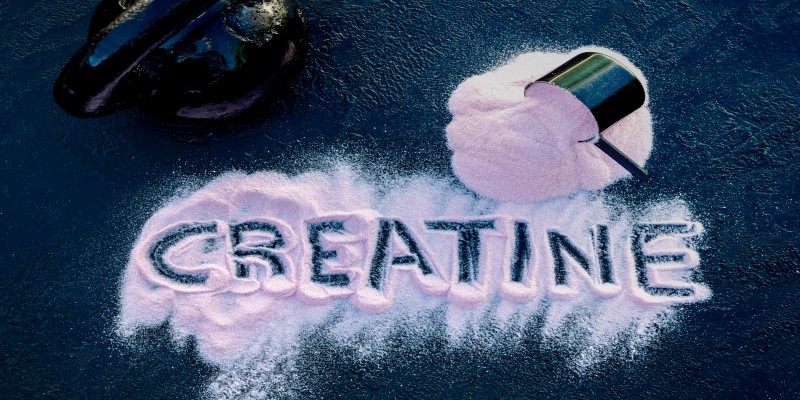Creatine, a staple for fitness enthusiasts, has piqued interest regarding its duration within the body. If you've pondered, "How long until creatine exits the system?" you're not alone. Let's delve into the complexities of creatine metabolism and its exit plan.
From ingestion to absorption, creatine embarks on a journey through the digestive tract, entering the bloodstream and eventually reaching muscle cells, which aids energy production. Understanding this process sheds light on the dynamics of creatine's presence in the body and provides insights into optimizing its usage for fitness and athletic performance.
Understanding Creatine:
Before diving into the intricacies of its exit timeline, let's first grasp the essence of creatine and its significance in fitness routines. Creatine, a naturally occurring compound, is present in trace amounts in various foods, particularly abundant in meat and fish. Its pivotal role in energy metabolism, especially during short bursts of high-intensity activities, renders it a favored supplement among athletes and fitness enthusiasts.
Creatine's Journey Inside the Body:
Creatine's voyage through the body is a remarkable process involving various stages and interactions within the body's complex systems.
Absorption and Circulation:
Upon consumption, creatine begins its journey in the digestive tract, where it undergoes absorption, primarily in the small intestine. Once absorbed, creatine enters the bloodstream and is transported to different tissues and organs throughout the body. This circulation phase is crucial for delivering creatine to its target destinations, particularly muscle cells.
Uptake by Muscle Cells:
A significant portion of the absorbed creatine is taken up by muscle cells, where it exerts its primary physiological effects. Creatine plays a pivotal role in energy metabolism within muscle cells, particularly during short bursts of high-intensity activity. Creatine molecules enter muscle cells through specialized transporters, ensuring efficient uptake and utilization.

Conversion to Phosphocreatine:
Upon entering muscle cells, creatine undergoes a pivotal change by binding with phosphate to generate phosphocreatine. This conversion is facilitated by the enzyme creatine kinase, producing phosphocreatine, a high-energy compound acting as a reserve for regenerating ATP (adenosine triphosphate) during strenuous physical exertion. Phosphocreatine stabilizes ATP levels, enabling muscles to endure prolonged periods of high-intensity activity.
Utilization and Energy Production:
Phosphocreatine is a rapid energy source during short bursts of intense exercise, such as weightlifting or sprinting. When muscles require energy, phosphocreatine donates its phosphate group to ADP (adenosine diphosphate), regenerating ATP and supplying the necessary power for muscle contraction. This dynamic process ensures a continuous energy supply for muscle function, enabling optimal performance during intense physical activities.
The Half-life of Creatine:
Understanding the concept of half-life is crucial in unraveling the exit strategy of creatine from the body. The half-life represents the time required for the concentration of a substance to decrease by half. In the case of creatine, with a half-life of approximately three hours, this means that if you ingest 10 grams of creatine, roughly 5 grams will still be present in your system after three hours.
This information offers valuable insight into the kinetics of creatine clearance, guiding individuals in optimizing their supplementation protocols and understanding how creatine levels fluctuate over time within the body.
Factors Affecting Creatine Clearance:
Creatine clearance, the process by which the body eliminates creatine, is influenced by various factors that dictate its rate and efficiency.
Metabolic Rate:
The body's metabolic rate, often called metabolism, is pivotal in determining how quickly creatine is cleared from the system. Individuals with a higher metabolic rate process and eliminate creatine more rapidly than those with a slower metabolism. Age, gender, body composition, and overall health can impact metabolic rate, influencing creatine clearance.
Hydration Status:
Adequate hydration is essential for efficient creatine clearance. When the body is well-hydrated, the kidneys function optimally, facilitating the removal of waste products, including creatine, through urine. Conversely, dehydration can impair kidney function, leading to slower creatine clearance. Maintaining proper hydration levels ensures the timely elimination of creatine from the body.

Renal Function:
The kidneys are crucial in filtering waste products, including creatine, from the bloodstream. Any impairment in renal function, such as kidney disease or dysfunction, can affect creatine clearance.
Individuals with compromised kidney function may experience slower creatine clearance, leading to prolonged presence in the body. Monitoring renal health is essential to ensure safe creatine supplementation, especially for individuals with pre-existing kidney conditions.
Individual Variations:
Each person's body is unique; individual variations can significantly influence creatine clearance. Genetic factors, lifestyle choices, and overall health status can impact how efficiently the body processes and eliminates creatine.
Age, genetics, hormone levels, and liver function can all contribute to individual differences in creatine clearance rates. Understanding these variations is crucial for tailoring creatine supplementation strategies to suit individual needs and optimizing its benefits.
Dosage and Duration of Supplementation:
The dosage and duration of creatine supplementation can also affect its clearance from the body. Higher doses or prolonged use may result in higher creatine levels in the body, prolonging the clearance time.
Conversely, lower doses or shorter supplementation periods may lead to quicker clearance. Finding the optimal dosage and duration based on individual goals and preferences is essential for maximizing the benefits of creatine supplementation while minimizing potential side effects.
Wrapping It Up!
In the realm of fitness and supplementation, creatine stands as a reliable ally for enhancing performance. Knowing how long creatine takes to exit the body provides valuable insights for planning supplementation strategies, adjusting doses, and understanding the impact on athletic endeavors.
While the half-life gives us a ballpark figure, the interplay of metabolism, hydration, and individual variations makes the journey of creatine through the body a fascinating and nuanced phenomenon. So, the next time you ponder the lingering presence of creatine, remember that it's not a straightforward countdown but a complex interplay of biological processes.







